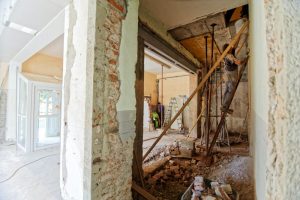In this comprehensive guide, we’ll explore the essential aspects of firewood, including its types, storage methods, and burning tips. Whether you’re a seasoned fireplace owner or a beginner, you’ll find valuable information to enhance your firewood experience. Understanding firewood not only adds to the comfort and ambiance of your home but also can significantly influence heating efficiency and safety.
Hardwood vs. Softwood: What’s the Difference?
Hardwood firewood is denser than softwood, providing a longer burn time and higher heat output. This is why hardwoods like oak and maple are often considered premium choices for those relying on wood for home heating. In contrast, softwoods, such as pine, ignite quickly but burn faster, making them ideal for kindling or short fires.
The density of hardwood makes it ideal for fireplaces that require significant, consistent heat output over long periods. Softwoods, despite their shorter burn time, are often more readily available and can be less expensive than hardwoods. However, they may produce more creosote, a potential hazard in chimneys if not managed correctly.
Popular Firewood Varieties and Their Characteristics
Oak is a popular choice due to its high density and ability to produce a long-lasting, even heat. Maple, another hardwood, is praised for its ability to create bright flames, adding to the ambiance while providing solid heat. Birch, known for its aesthetics and good burning characteristics, produces a sweet smell and moderate heat.
Pine, a commonly used softwood, is easy to split and burns quickly with bright flames. However, its higher sap content can lead to increased creosote buildup in chimneys. Ash, on the other hand, burns fairly smoothly and cleanly, making it a versatile choice among firewood varieties.
Proper Firewood Storage Techniques
Proper storage of firewood is crucial to maintain its quality and burning capability. Storing firewood off the ground is vital to prevent moisture absorption and decay. Pallets, concrete blocks, or a dedicated firewood rack are excellent solutions to elevate firewood and keep it dry.
Covering the top of your firewood stack with a tarp protects it from rain and snow while ensuring the sides of the stack are open allows for adequate air circulation. This airy exposure is essential for the drying process known as seasoning, which enhances firewood’s burning efficiency. Well-seasoned wood not only produces more heat but also burns cleaner, minimizing creosote buildup.
Indoor vs. Outdoor Storage: Pros and Cons
Indoor storage offers the convenience of easily accessible firewood during the winter months, reducing the hassle of venturing outside. However, storing wood indoors can invite unwanted pests into your home and creates a potential mess from dirt and debris. It is advisable to only bring in a small quantity and cycle through it quickly to mitigate these issues.
Outdoor storage is generally the preferred method, as it keeps pests at bay and allows for larger quantities of wood to be seasoned over time. The main downside is exposure to the elements, which may require more careful covering and maintenance. When done correctly, outdoor storage provides ample supply while ensuring the best quality firewood.
How to Start and Maintain a Fire
Starting a fire may seem daunting, but with the right approach, it becomes a straightforward process. Begin by using small, dry kindling to create a base more receptive to flames. Slowly add increasingly larger pieces of wood as the fire grows to maintain a consistent burn.
A balanced mix of hardwood for long-lasting heat and softwood for quick ignition will sustain a fire effectively. Maintaining a sufficient air supply is crucial; leave the fireplace or stove door slightly open when first starting the fire. Once a healthy flame is established, close the door to contain the heat and keep the fire burning steadily.
Maximizing Heat Output and Minimizing Emissions
Efficiently burning firewood not only warms your home more effectively but also minimizes harmful emissions. Use well-seasoned wood, as green or damp wood produces excessive smoke and tar. A fire burning at higher temperatures achieves cleaner combustion, reducing smoke and the risk of creosote buildup.
Maintaining a balanced air supply through proper venting and avoiding overloading your fireplace helps control burn rate and heat output. Appliances like fireplace inserts or wood stoves can enhance efficiency by trapping more heat. With the right adjustments, you can significantly reduce emissions and enhance heat output.
Safety Considerations When Burning Firewood
Fire safety is paramount when using firewood, involving diligent preparation and vigilance. Always use a fire screen to contain sparks and prevent them from escaping onto combustible materials. Additionally, a clean, clear area around your fireplace reduces fire hazards and secures a safe environment.
By understanding the types of firewood, mastering proper storage, and applying effective burning tips, you can enjoy the warmth and ambiance of a crackling fire safely and efficiently. This guide equips you with the knowledge to make informed decisions, enhancing your firewood experience. Whether used for heating or setting a cozy atmosphere, firewood provides an invaluable resource for creating comforting home environments.




